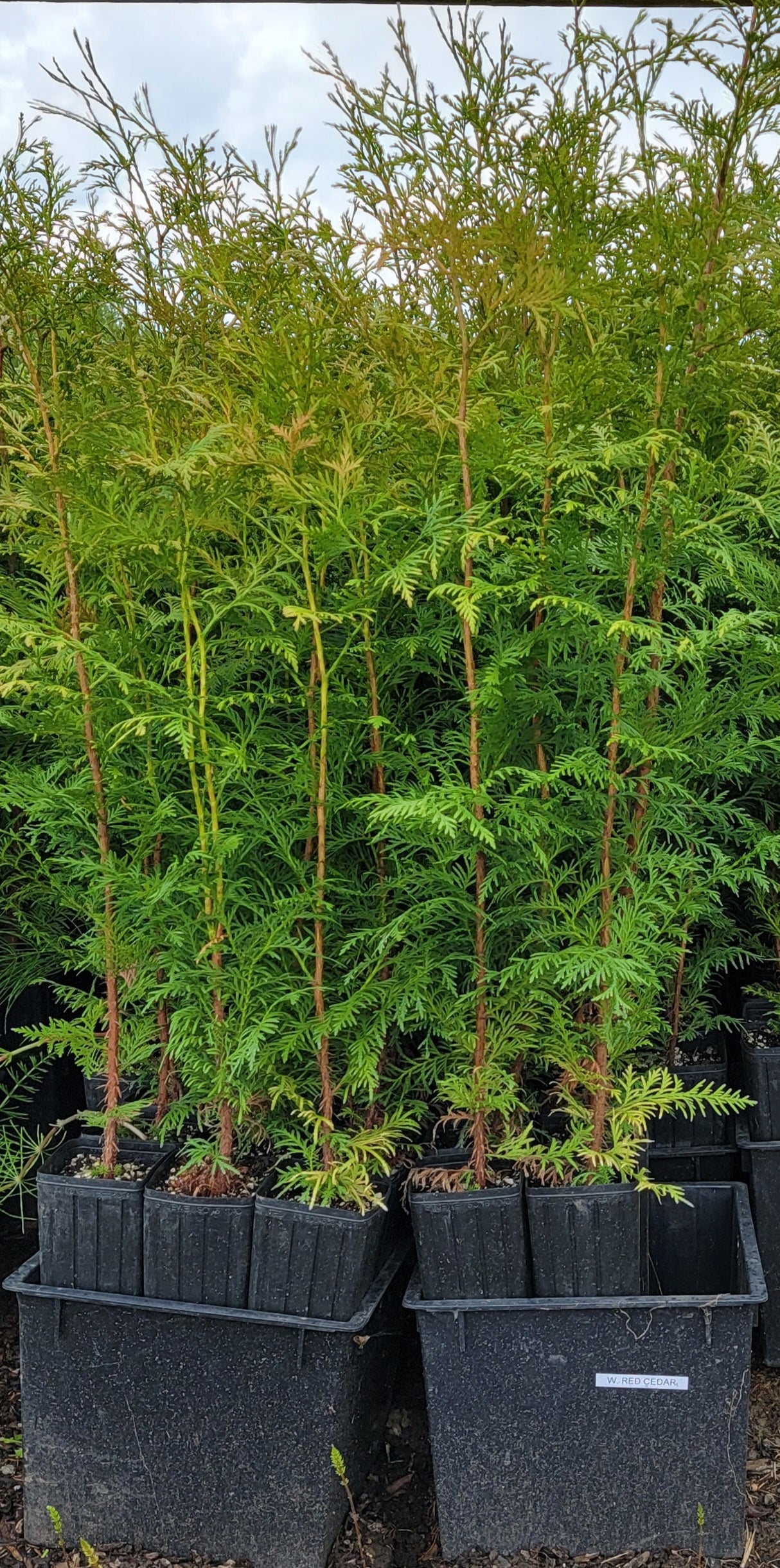New Beginnings Garden
Western Red Cedar - Thuja Plicata
Regular price
$4.00 USD
Regular price
Sale price
$4.00 USD
Unit price
per
Shipping calculated at checkout.
Couldn't load pickup availability
Two year old tree. One year of plug growth and at least one year of growth in a tree pot.
- Conifer, evergreen tree, 50-100 ft., narrow, pyramidal, buttressed base. Usually maintains lower branches. Branches horizontal or drooping but turning upward at the end, especially the lower branches. Leaves, scale-like, opposite, shiny dark green, usually with white markings ("butterfly" pattern) on the underside. Cones elliptical, only 4-5" long, clustered and upright, sharp-pointed cone scales.
- Sun to partial shade. Prefers moist, well-drained, fertile soils, pH adaptable. In the wild found in moist flats, slopes, and banks of rivers. Can be maintained in a hedge.
- Hardy to USDA Zone 5 Native range extends from Alaska south to Washington, Oregon and into to northern California, and east to Montana. It is one of the four native "cedars" (so-called) in Oregon.
- Western Red Cedar has been called the "corner stone of northwest coast Indian culture". Its wood is easily split and rot resistant and was used to make important cultural items including, dugout canoes, paddles, house planks, baskets, spears, arrow shafts, and many other implements. The bark was stripped from trees in the spring, hung up to dry, and then beaten until it separated into layers ready for making baskets, ropes, and mates. Red Cedar was considered an excellent fuel, especially for drying fish, because it burns with little smoke.
Share





